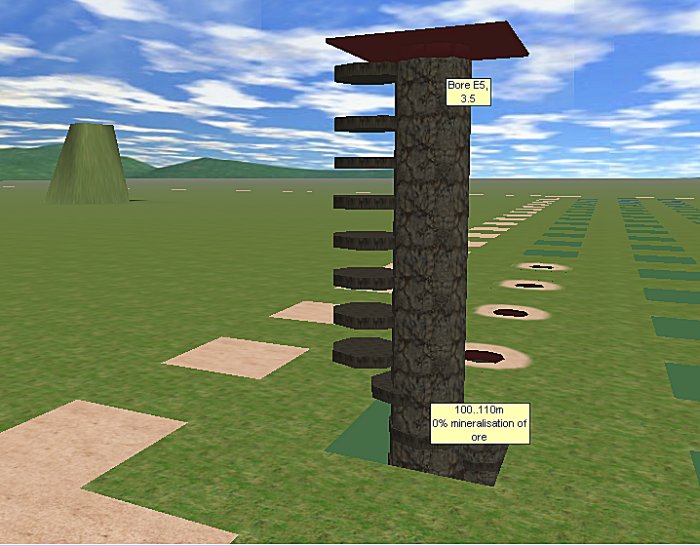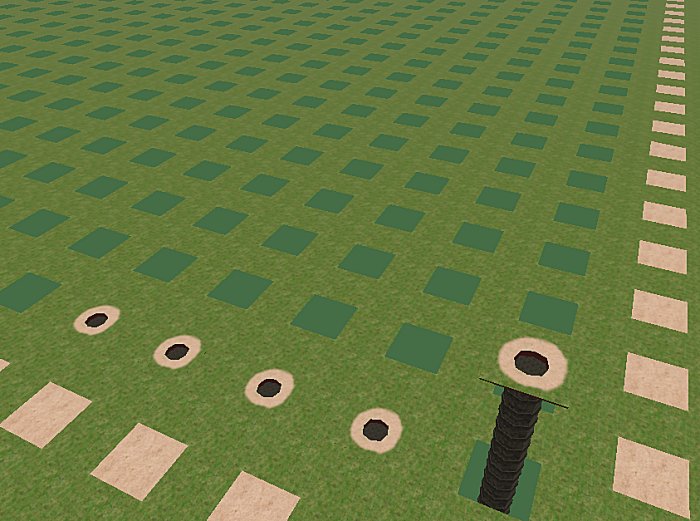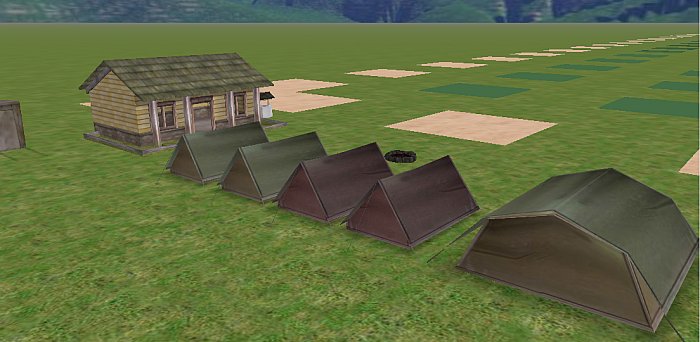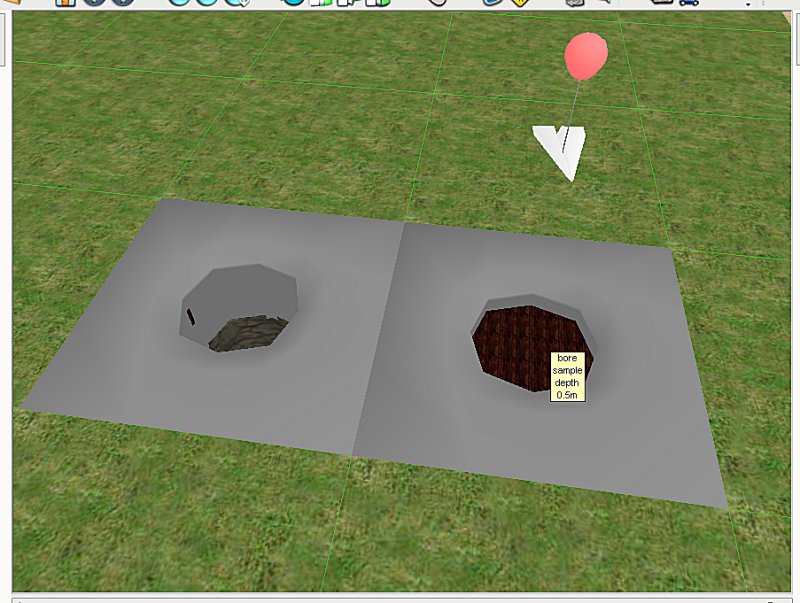Mining Science Centre
Cybernauts investigate “What is mining?”, and look at Copper and Zinc mining in particular, we look at ore, appearance along with the commercial application of metals
Looking at styles of mines (open-cut and underground), we investigate the commercial aspects of each, asking the question “Why Mine?”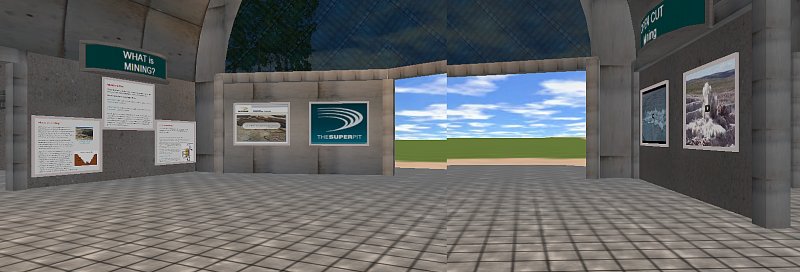
Consultation with various stakeholders is important, the social and ethical implications of Mining are explored, along with the perspectives these different people bring to the discussion.
We then explore the activities cybernauts are required to complete: “Your Mission, Jim…”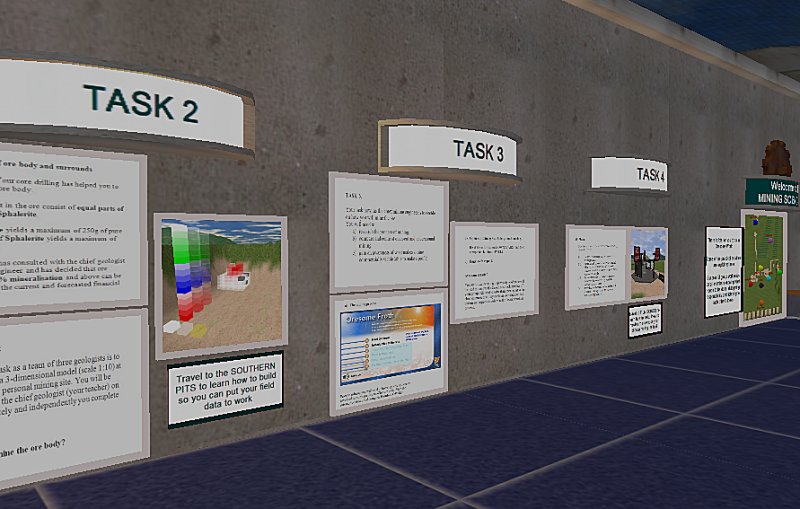
Down in the modelling pits, cybernauts use semi-transparent lego-like blocks to construct a 3d model of their field recordings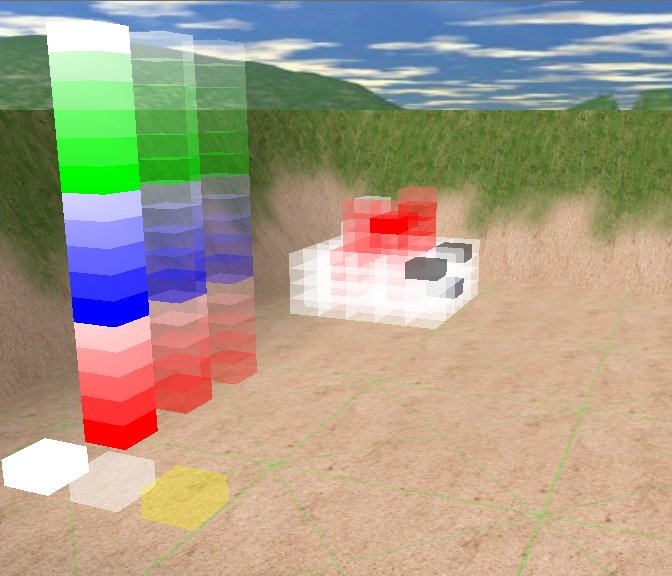
This mining science centre is now operational, time to move on to other activity centres.
Infrastructure
Main habitation/industrial zone now done, it is time for detailing
The Mining Science Centre will house instructions on how to mine, costs/benefits, social and ethical issues around mining, and is adjacent to the world connect point (ground Zero)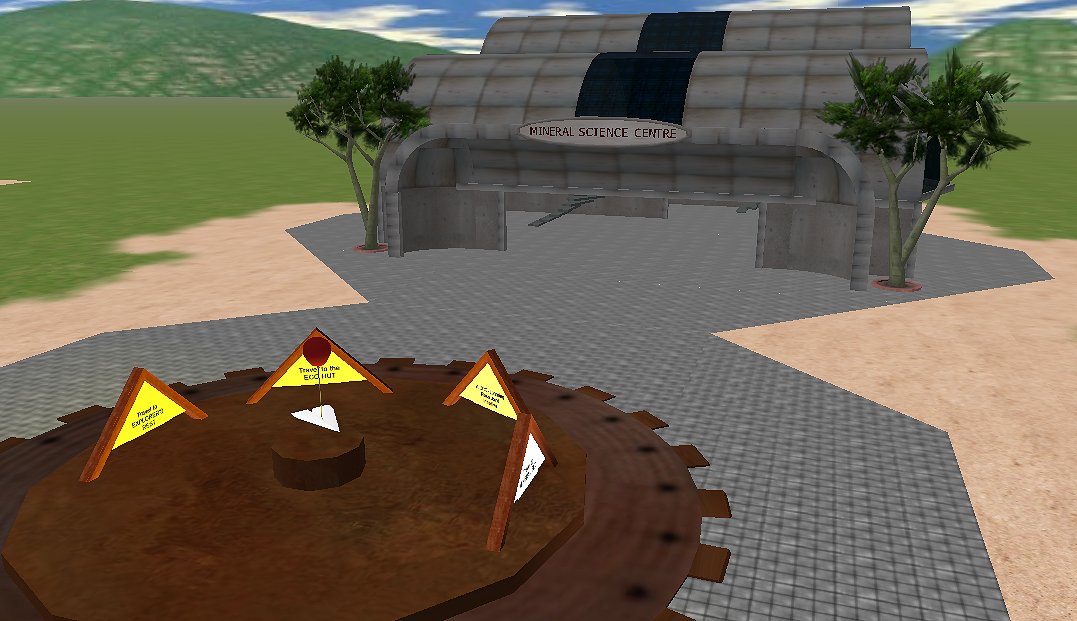 I built a power station, mightily influenced by an iconic English one (Battersea Powerstation) and rather naughtily had a pink plastic pig floating above it whilst I built it (thank you Pink Floyd for the inspiration, and the soundtrack to this build). I have added some “smoke” from a couple of the stacks, will have to check with the client to see if it is “green enough” of whether I am allowed to make it dark and nasty.
I built a power station, mightily influenced by an iconic English one (Battersea Powerstation) and rather naughtily had a pink plastic pig floating above it whilst I built it (thank you Pink Floyd for the inspiration, and the soundtrack to this build). I have added some “smoke” from a couple of the stacks, will have to check with the client to see if it is “green enough” of whether I am allowed to make it dark and nasty.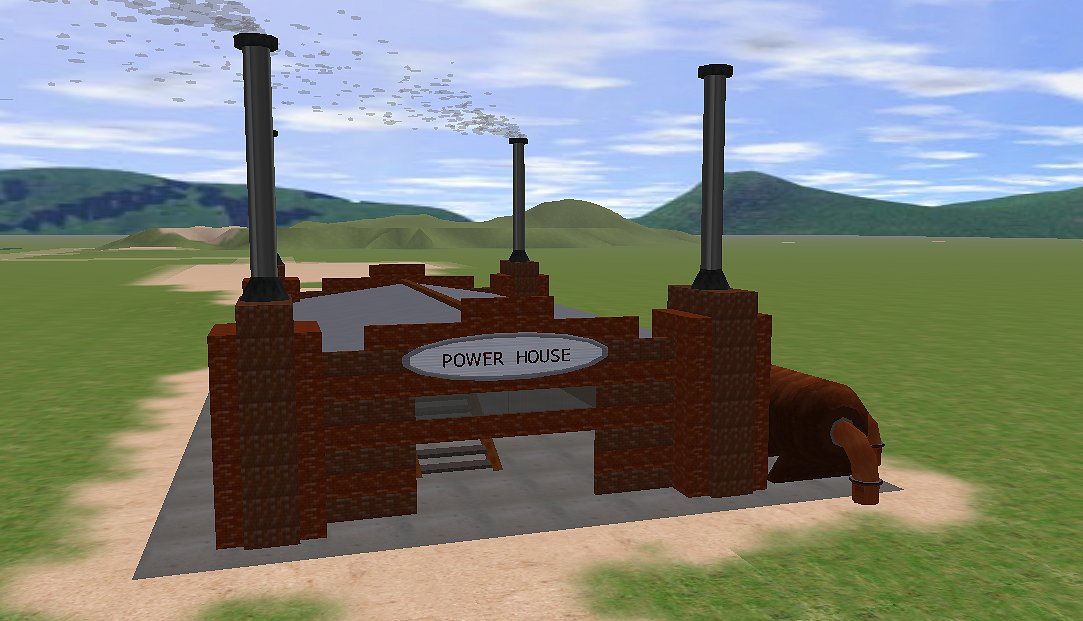 The refinery beat me for a while, until I realised I had NO IDEA what one looked like – thank you interweb, it seems they come in all sorts of shapes, flavours (all dirty) – I decided on steel, colourbond and stacks with louvers in what in the end is an “L” shaped factory.
The refinery beat me for a while, until I realised I had NO IDEA what one looked like – thank you interweb, it seems they come in all sorts of shapes, flavours (all dirty) – I decided on steel, colourbond and stacks with louvers in what in the end is an “L” shaped factory. The ECO HUT lives on a mountain, pristine and overlooking the industrial complexes below – we will look at rehablitation, ecosystem assessment, environmental impact statements and other things mining companies do before during and after the mining.
The ECO HUT lives on a mountain, pristine and overlooking the industrial complexes below – we will look at rehablitation, ecosystem assessment, environmental impact statements and other things mining companies do before during and after the mining.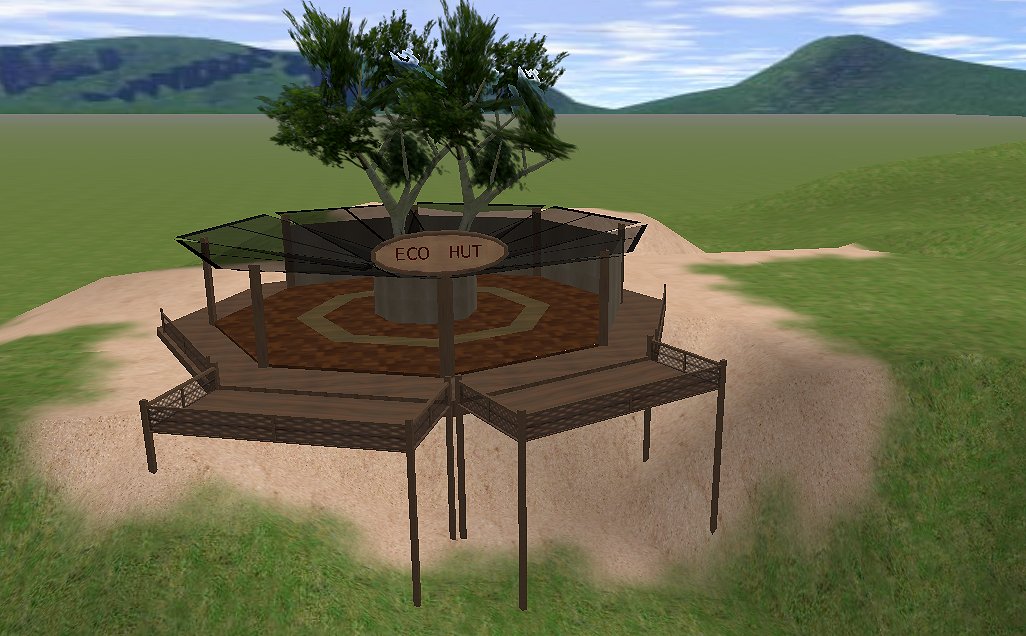 Detailing can now begin – we have display boards, stuff to play with (using the in-world browser), perhaps some machinema, lighting and sfx. I also have some strategic points for “discussion circles” as I think groups will want somewhere out of the sun to go and have a private chat.
Detailing can now begin – we have display boards, stuff to play with (using the in-world browser), perhaps some machinema, lighting and sfx. I also have some strategic points for “discussion circles” as I think groups will want somewhere out of the sun to go and have a private chat.
Happy that the majority of the infrastructure is now complete – plenty of room for modelling pits that cybernauts will use to construct scale models of the ore body prior to demoing their solution for mining it. Potential for rich, embedded, connected, collaborative and aligned with the curriculum learnings abound.
No idea what anyone else thinks so far … *tap tap tap* is this thing on? What do you reckon?
Accommodating minors
So our cybernauts will enter Minex5 (or “Oresome World” … yeah, don’t ask) and learn a bit about geological science
They will meet, greet, investigate some mineralogy and geoscience the head off to learn about environmental consequences of mining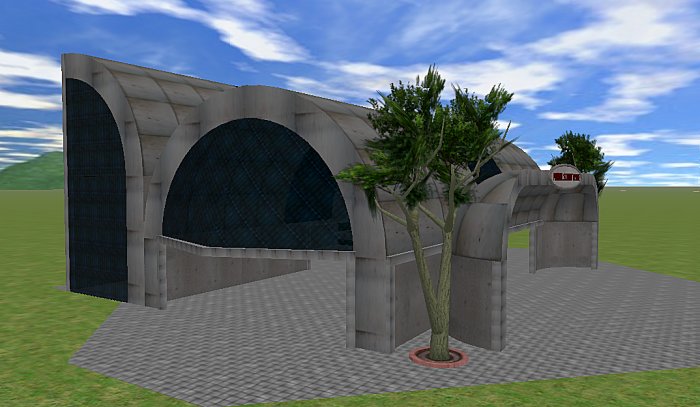 Quite happy with this structure – modelled on the Maritime Museum in Sydney, it has a multi-level atrium and some funky spaces that will be kitted out with activity boards.
Quite happy with this structure – modelled on the Maritime Museum in Sydney, it has a multi-level atrium and some funky spaces that will be kitted out with activity boards.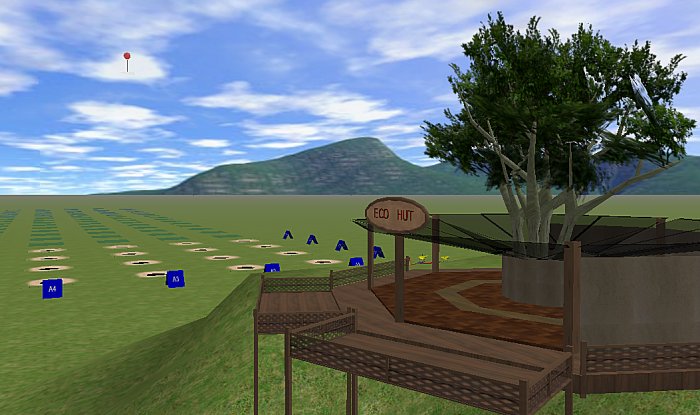 The “Eco Hut” is on a small range “One Tree Hill” overlooking the potential mineral bed, has a funky fan roof and is built around the one tree there.
The “Eco Hut” is on a small range “One Tree Hill” overlooking the potential mineral bed, has a funky fan roof and is built around the one tree there.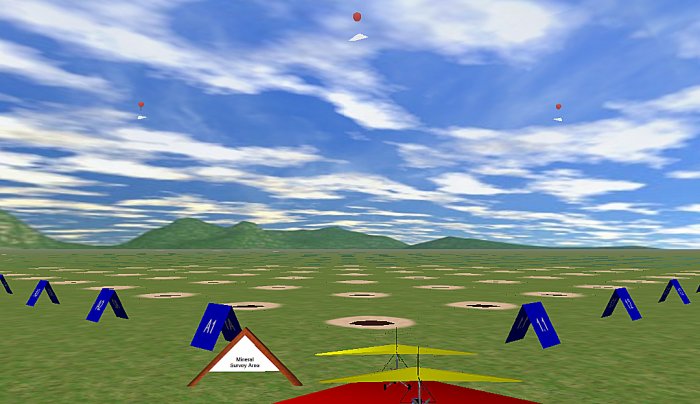
Then they undertake an aerial survey of a large area mineral bed, interpret the results and build models of what they have found. I have placed ultralights around (all that tiresome walking gets a bit monotonous over such a large area) – you can see the aerial survey above, sector markers and boreholes in place. I may have to add some grid markers to make sense of the space – the rez distances are a pain – objects phase in and out of existence because they are so far away – nothing I can do about that unfortunately – is an Activeworld “feature” apparently.
Quite happy with the weekend’s progress – lots more to do but shape and sense beginning to emerge.
Minefield
So, after designing components, I have begun placing them in-situ; the effect is to create a gridded area that contains core samples you can click on to shift out of the way, each shaft contains 12 mineralisation readings:
The exploration field spreads over 20 x 25 bore holes, grouped in bunches of 5×5 to make a grid reference scheme that can be used to record data in the field:
Punching holes in the landscape is fairly simple, and fitting caps is important so cybernauts do not fall through into the underworld (a bewildering experience even for me). It took a while to get the cap texture to wrap around the cap geometry acceptably so it blends seamlessly into the surrounding dirt, and also including a topsoil layer before the first core plug took me an age – the lighting model in-world differs from the modelling program (Wings 3D) so I am learning the manual adjusts necessary to make them inter-operable.
I have also begun to establish the exploration campsite (“Explorers rest”) which will contain some information about the exploration process, and have allocated space closer to ground zero for a resource district so that cybernauts can learn about mining science as part of the world experience.
Boring
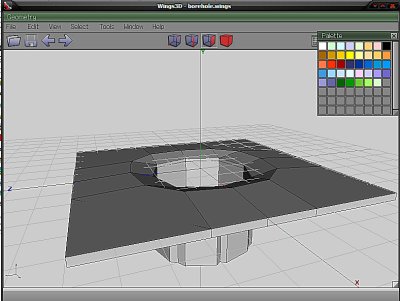 Now one activity cybernauts will have to complete is a collection of bore-samples, detecting mineralization according to depth. The need arose for a scenic object that performs the function of a bore-hole cap.
Now one activity cybernauts will have to complete is a collection of bore-samples, detecting mineralization according to depth. The need arose for a scenic object that performs the function of a bore-hole cap.
I fired up wings, experimented with scale to determine the appropriate size to fit an entire grid point, then sculpted a hole that tapered so it would join to a tube primitive I made earlier.
Testing their placement was fairly straight forward – with the scale correct, they move and position modularly, and it allows me to manage how they will manage taking readings at depth – I thought about sliding core samples with meta information that would slide out of the way to reveal a deeper sample.
If the movement is not “global” then it will appear to move ONLY to the cybernaut that clicks on it, meaning multiple students can work on the same spot at the same time without interfering with each other – an important consideration if there is a class worth in at a time.
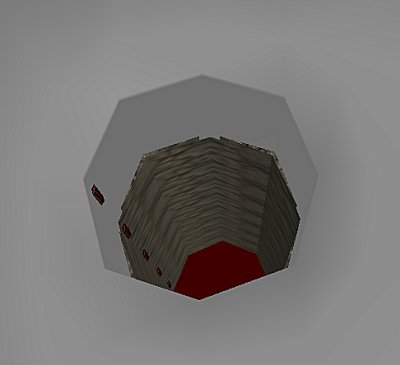 Working out how to texture, colour and so on, then on to layout of the mineral bed; progress being made.
Working out how to texture, colour and so on, then on to layout of the mineral bed; progress being made.
On a purely practical matter, vestiges of the sample are still visible when they are rolled out of the way, so students can still access the data stored in them (you can see the brown fragments still emergent from the shaft wall) .
I think this will work well – what do you think?
